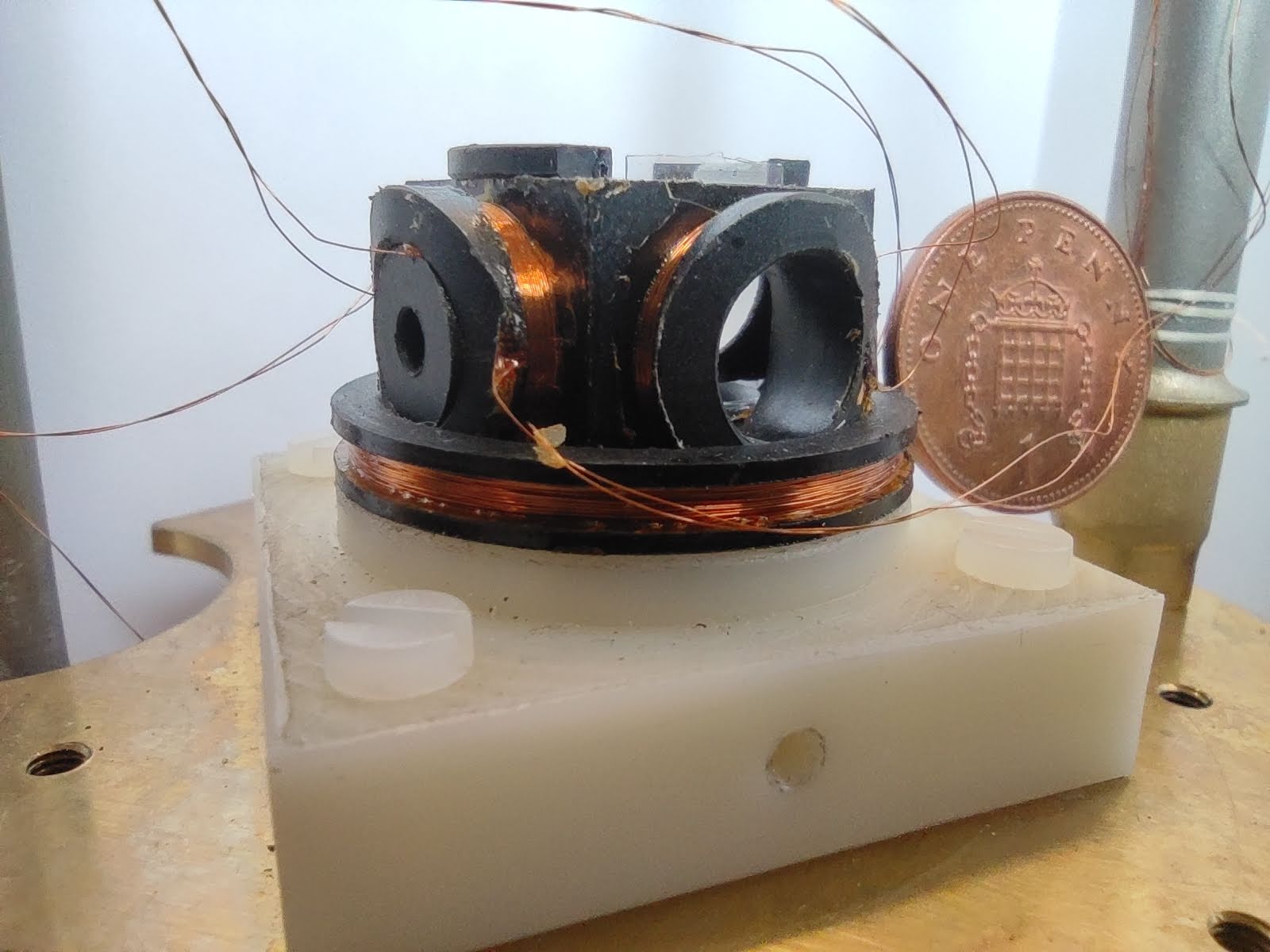Irene Vega
The device developed consists of a 'levitator' that opens a door to the study of quantum turbulence in previously unexplored temperature regimes, as well as other quantum phenomena at scales larger than microscopic. The scientific team, made up of Manuel Arrayás Chazeta, José Luis Trueba Santander and Carlos Uriarte González, researchers from the Electromagnetism and Fundamental Physics Group of the URJC, and D. Zmeev of the Ultra Low Temperature Group of the University of Lancaster (United Kingdom), has completed the optimized design and manufacturing of this 'levitator'. Thus, they have developed a unique probe to study the behavior of superfluids in the temperature range of a few microkelvins (temperatures less than one thousandth of a kelvin, that is, less than -273,14 degrees Celsius).
"Currently, once the 'levitator' has been manufactured, the work is focused on the system for detecting the position of the superconducting sphere that must be integrated inside a cryostat, a device used to maintain low temperatures", explains Manuel Arrayás .
To carry out this project, firstly, the theoretical development of the prototype was carried out based on the basic principles that govern the electromagnetic behavior of superconductors. Numerical simulations were then performed to optimize the design parameters in order to save experimental costs. And finally, the prototype was built and the preliminary tests were carried out in a glass cryostat filled with liquid type II helium (He) at 1 Kelvin (-272 degrees Celsius).
The results obtained will allow us to broaden the knowledge we have so far of turbulence phenomena, which affect the movement of cars, ships and aerospace vehicles. "Turbulence, which was already the object of study by Leonardo da Vinci himself, can be understood as the complex spatial and temporal movement of a fluid, as opposed to the laminar regime. Today, many processes, from the generation of magnetic fields in galaxies to the efficiency of turbines depend on turbulence. Despite its ubiquity, turbulence remains one of the great unsolved problems in science", points out the URJC researcher.
Initially this project has been financed by the Engineering and Physical Sciences Research Council (UK EPSRC), through the European Commission's H2020 program, as well as through NATO's Science for Peace and Security Program and the project of the URJC AMASSING program itself. To continue this line of research, the UK EPSRC and the European Microkelvin Platform (EU) extra funding in a new project that will allow the study of quantum turbulence in Helium type II using the designed device.




